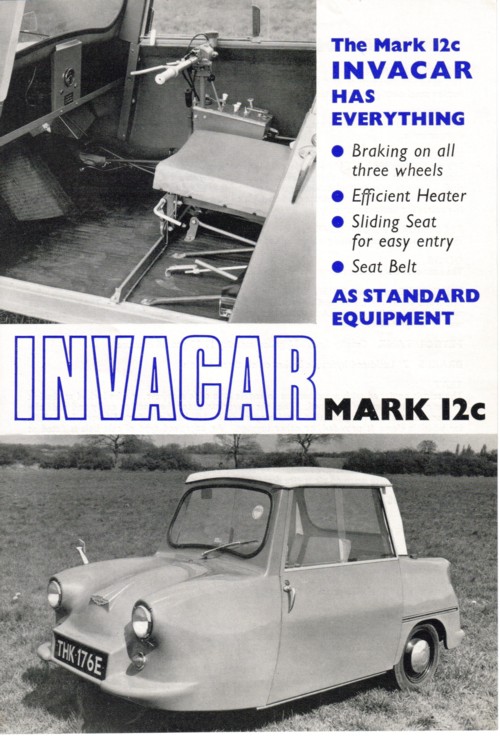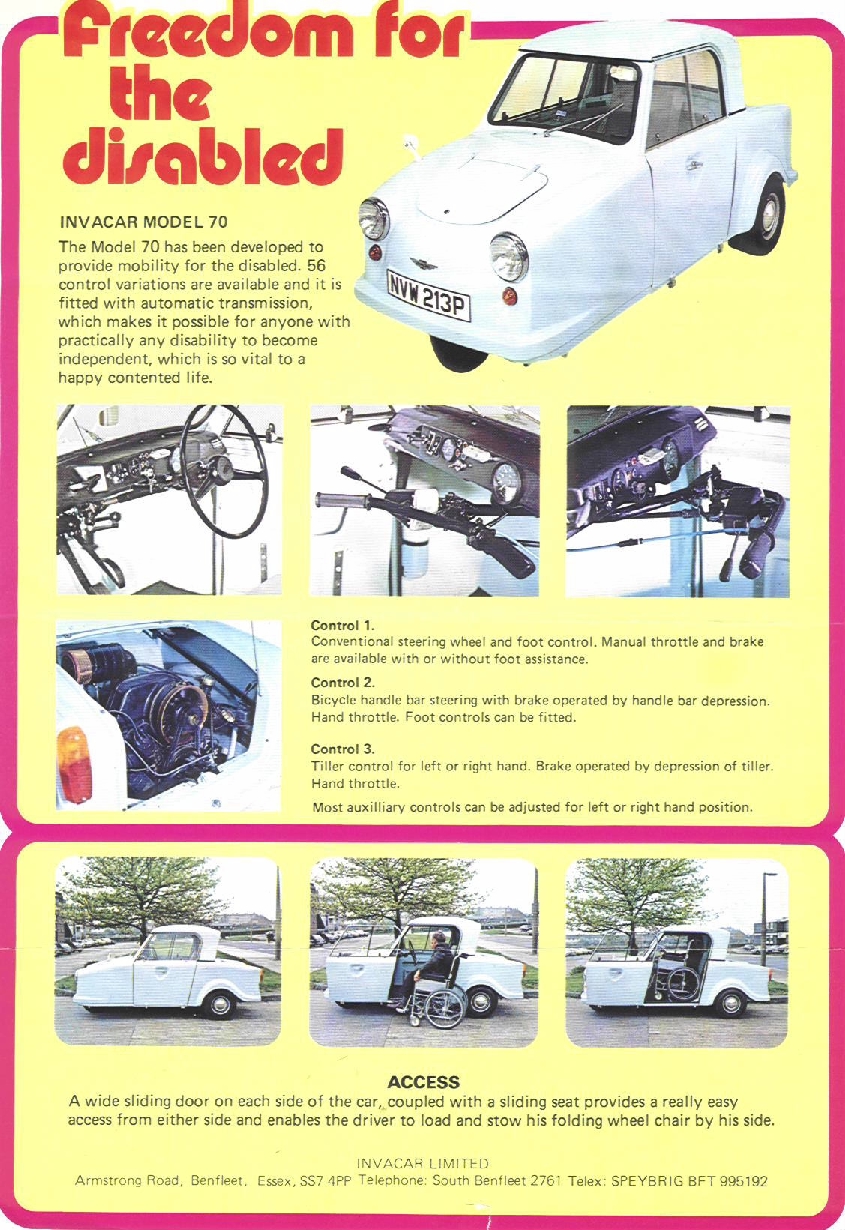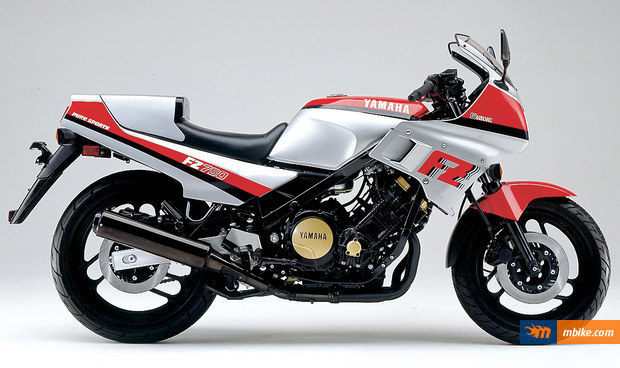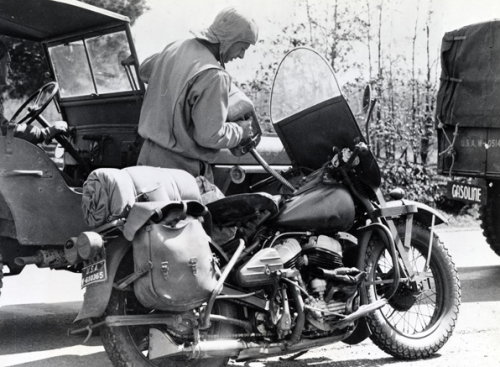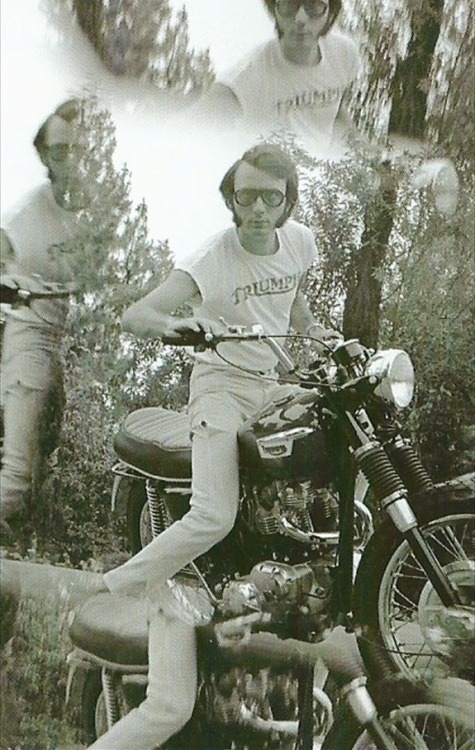

James Dean dies at 24.
Driving his Porsche 550 Spyder (nicknamed "Little Bastard") headed to a car race in Salinas, California, with his mechanic Rolf Wuetherich, when they were involved in a head-on collision with a car driven by a 23-year-old college student named Donald Turnaspeed. Dean was taken to Paso Robles War Memorial Hospital, where he was pronounced dead at 5:59 p.m. Wuetherich, who was thrown from the car, survived the accident and Turnaspeed escaped with minor injuries. No charges were ever filed against him.
Often the vehicle associated with James Dean is the Porsche but, there was a love-affair with motorcycles long before he sat behind the wheel of that Spyder. His first experiences with a motorized two-wheeler was in 1945 on a Whizzer (basically a balloon-tired Schwinn with a 2 horse engine). On a good day, with the wind at your back, the Whizzer could hit 30 mph and you know that 14 year-old tested its limits every chance he could.
When Dean turned 15, his uncle and guardian, Marcus Winslow Sr., gave him a 1947 CZ 125cc motorcycle purchased from a local Indian Motorcycles dealer, Marvin Carter, just a 1/4 of a mile down the road from where they lived in Fairmount, Indiana. His family said that in the saddle of the CZ "young Jimmy became hell on wheels". He only knew one speed and that was wide open.
Even though the 21 year-old actor was living in NYC, Indiana was still home and he frequently returned there for the holidays. It was on one of those winter respites in 1953 that he traded the CZ in on a Royal Enfield 500cc twin. Although Marvin Carter warned him to not over-stress the freshly rebuilt engine he instead bundled himself up and set off for New York at top speed in the dead of winter. He made it to Harrisburg on the Pennsylvania Turnpike before the engine threw a valve. Luckily, there was a motorcycle dealership that could repair the Enfield in Harrisburg, Huntzinger’s Indian Motorcycle Sales & Service. The bike was hauled there for repairs and as Dean was casually looking over the bikes in the showroom he spotted a maroon and gold-striped 1952 Indian Warrior TT. It was love at first sight! Dean negotiated a trade for the damaged Royal Enfield, his agent in New York wired him the money, and the bike was his.
Back in New York with the Indian motorcycle, Dean stored it at a Greenwich Village garage where budding actor, Steve McQueen, worked as a part-time motorcycle mechanic.
It’s not known what happened to Dean’s Indian, but his next motorcycle purchase was a shell blue 1955 Triumph Tiger. He then traded in his T110 for a 1955 Triumph TR5 Trophy at Ted Evans Motorcycles in Culver City, California. It was shell blue, as well. But, he had it fitted Flanders high handlebars, a straight-through off-road high exhaust pipe with no muffler, knobby tires, and a single 6T-type spring seat with a pillion pad bolted to the rear fender; backwards, the way Marlon Brando had the pillion seat on his Triumph Thunderbird in The Wild One.
In the late 1980’s, Dean’s cousin, Marcus Winslow Jr., went on a quest to locate the 1955 TR5 Triumph Trophy and have it put on display in Fairmount as a tourist attraction. After Dean’s death, his father, Winton Dean, sold it back to the original dealer, Ted Evans Motorcycles. It was with the help of Ted Evans that the Triumph was traced to a man in Minnesota who had raced it and it was now heavily modified for that purpose. Through estate papers and VIN numbers it was verified that this was indeed James Dean’s Triumph. Winslow Jr. bought the bike and had it restored to as-new condition, but in the same configuration as Dean had customized it for himself. Seriously, I don't make this shit up.
















